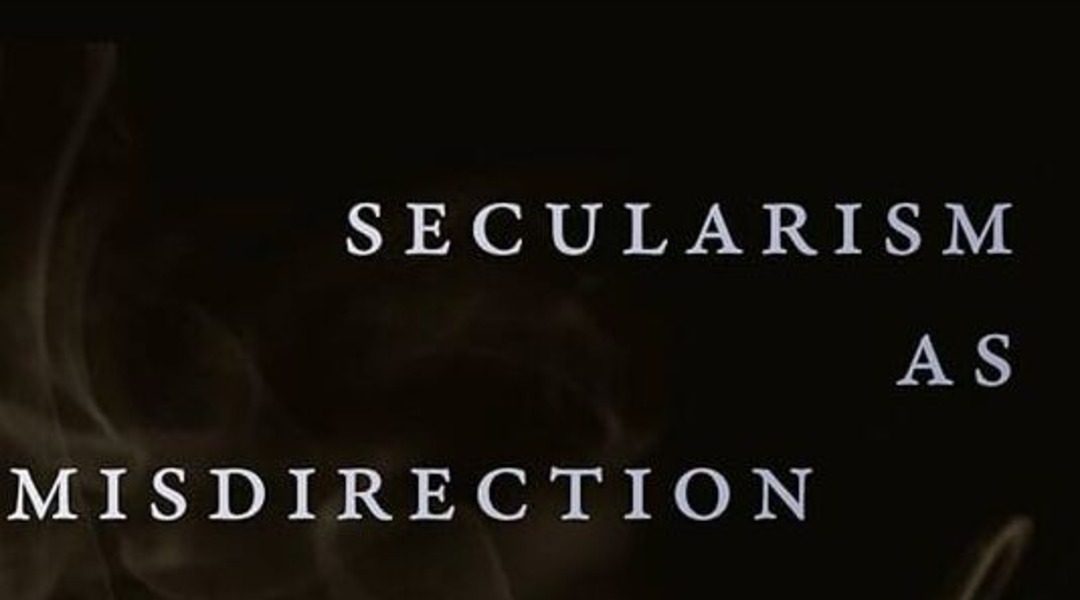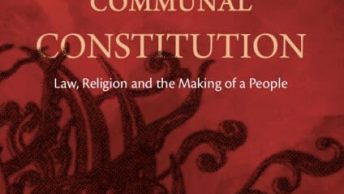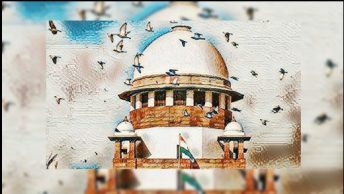Summary: In this piece, Prof. Nivedita Menon concludes the discussion on her latest book, Secularism as Misdirection: Critical Thought from the Global South, by responding to all the interlocutors. The summary of the book by Prof. Menon can be accessed here. Its review by Prof. Kalpana Kannabiran can be accessed here, by Prof. Aditya Nigam can be accessed here, by Prof. Hilal Ahmed can be accessed here, and by Prof. Sasanka Perera can be found here.
First of all, my gratitude to Law and Other Things for hosting this discussion. It is such an honour and pleasure to engage in this conversation with scholars and friends who have been my interlocutors in different ways over time. Their responses are all so thoughtful and involved in the project of the book, I can only be humbled and grateful. Trying to engage now with their complex essays, I find ongoing conversations, opening up newer discussions, rather than points I need to counter or argue against. I decided therefore to pick up on one theme from each essay that I would like to take forward.
I will begin with Sasanka Perera’s essay that focuses on the idea of the global South, and pick up on the theme of pedagogy that he foregrounds. As a long-time teacher myself, this concern immediately resonates with me. Sasanka writes – “I consider pedagogy to be far more important in intellection than the seemingly theoretical, obscure and abstract writings we must deal with as a quotidian academic matter, that are often unrelated to location, experience and history.” It may be the experience of many career teachers (as it is mine), that our reading and thinking and intellection in a way, take on a form and meaning in the “real world”, only once we have articulated the ideas we are grappling with, in a classroom situation. The very formulating of a syllabus for a course, the very naming of a course, is a process that distils one’s somewhat inchoate ideas into a framework that compels legibility, at least temporarily for the duration of the class. Teaching at the undergraduate level in public universities in India is different, it does not provide the luxury of formulating one’s own courses, because the same courses are meant to be taught across affiliated colleges, and are produced through processes that cannot possibly include all teachers, even in the best case scenario of democratic functioning and academic probity. (This best case scenario has been demolished quite thoroughly over the past decade in India, but that is another story). However, even while teaching a pre-set syllabus, one’s own ideas and reading and thinking cannot but enter the classroom. One is also always aware that the course should reflect debates in the field rather than the point of view by which one is most enamoured.
With a concept like “global South”, as Sasanka points out, the baggage associated with it often resulted in the global South being “manifested in multiple renditions in class, most commonly as a disconnected geographic region, scarred by colonialism and lacking in development — the so-called ‘Third World’ of the Cold War American State Department lexicon.” To disentangle a productive idea of the global South from this understanding, and to indicate it as a space of thought, invoking the possibility of revaluing and learning from speech that exists in the margins, reshapes our horizons considerably. In the book Sasanka has edited with Renny Thomas, Decolonial Keywords: South Asian Thoughts and Attitudes, they have compiled concepts in different languages from different parts of South Asia, that indicate “specific attitudes, ways of seeing and methods of doing, which are embedded in the historical and contemporary experiences in the region”. How the slow building of a vocabulary of this sort (an exercise being conducted in many parts of the global South now), could transform the classroom through counter narratives and research, is an unfolding experiment.
The last time I taught the course that gave my book its subtitle (Critical Thought from the Global South), I included a new section. Drawing on Walter Mignolo’s claim that in decolonial thinking ‘nature’ is already a colonial term, “desacralized and separated from the human world”, this section was based on scholarship that tries to decentre the human from “the world” as we claim it, opening up new imaginations of living on this planet. Vinciane Despret asked What would animals say if we asked the right questions? training a critical lens on sociobiological perspectives that read animal behaviour through the normalizing frames of dominant human societal values. The most acute question she asks in this wonderful set of provocative essays is, “With whom would extraterrestrials want to negotiate?” By asking this question she shakes the foundation of most speculative fiction that imagines extraterrestrials as naturally turning to humans to get answers about the planet Earth and its workings. VM Ravikumar reads BR Ambedkar’s The Buddha and his Dhamma to trace the philosophical journey of Ambedkar after his conversion, towards the idea of maitri that knits together the human and non-human in nature. Along with other readings in this section (Thom Van Dooren on the unwelcome crows of the Netherlands; Radhika Govindarajan on the entangled lives of humans and animals in the Central Himalayas), we now set up the non-human world as the South – to the extent that we could, given that all the texts are written by humans, albeit humans critical of our privilege and power. We considered what new and discomforting ethical frameworks might emerge for us in our everyday lives if we gave up on the idea that the world is exclusively “for us”. Pedagogy is indeed what takes us by the collar in directions we had not thought even existed.
This takes me directly to Hilal Ahmed’s response from which I will pick up one theme, arising from his concluding question about the scholar as a politically committed individual. Hilal says that he encounters in the book “an inexplicable tussle between a serious scholar and a deeply committed political individual. Menon, the scholar follows the conventions of research and remains honest to her ‘materials’; while Menon as a politically sensitive individual tries her best to get rid of the limits set out by the academic research. This tension is used very creatively to open up the scope of the identified questions for a highly productive discussion. Yet, one finds an over reliability on academic ‘materials’, which many a time actually becomes a hurdle.”
I am grateful to Hilal for having picked up on this tension between “scholarship” and “political commitment”, for it is a more general issue that many of us struggle with. The tension is most evident in the context of pedagogy, where one’s responsibility is to introduce students to a field of debate, revealing the architecture of the curation of a course that made it take the shape it did. Yet in the world in which we now live, only some forms of pedagogy are accepted by the dominant ideologies as properly scholarly, not ‘activist.’ Hilal does not use this word, but this is the word, (implied by his term ‘political commitment’) that hangs directly or indirectly over Indian and US universities, as counter hegemonic speech is stifled inside and outside classrooms. Hilal feels my relying on academic materials becomes a hurdle to expressing my political commitment (to democracy and justice, as I articulate in the book). This may be true to some extent, and it reflects the contradictions between the different registers in which many of us try to write – as an academic to other academics, following the protocols of academic rigour; as a public commentator to a non-academic audience, expressing opinions more directly and forcefully; and in a classroom, expressing not one’s own ideas alone, but bringing into that space multiple voices in the field, without at any point parading our subjective opinion as objective and value neutral. If I read him correctly, the point he is raising is that intellectual argumentation which retains ambiguity and complexity does not offer a straightforward answer that can be useful politically. However, these are different registers and the intellectual/academic is not, and should not be, immediately reducible or translatable to the political.
The question Hilal’s thoughtful remarks on this point leads me to is this – as we see more and more academics being punished and even criminalized for expressing opinions that counter stifling and overpowering supremacist narratives world-wide, should we not name such supremacist narratives as equally “activist”, equally “politically committed”? What do these terms mean, after all, in the context of academic speech and writing? As opposed, that is, to physically demonstrating one’s support or dissent to a hegemonic regime of thought and politics? Is it any less activist to teach Kant the philosopher of Reason while banning from classrooms Critical Race Theory which identifies Kant as the progenitor of hierarchical race theory that underlies racism today? Is it any less activist to teach Ambedkar without frontally taking on board his scathing critique of the violence of caste underlying the system that names itself as “Hinduism”? Or to teach Golwalkar, Savarkar and Deen Dayal Upadhyaya as “nationalist” without any analysis of their Hindu supremacist, anti-minority and Brahminical assimilationist agendas?
I will leave these questions here, generated from the provocation Hilal poses in his response.
There are two other questions he raises, about the continued relevance of the idea of secularism for Muslim politics, and about whether (as I suggest), insurgent constitutionalism and escaping from the state and capitalism, have the capacity to counter powerful regimes and the party system of which I am critical. Regarding the latter, he points out through the example of farmers’ protests against farm laws and the wrestlers’ protests against sexual harassment, that “issue-based protests are either managed by the state easily or they are appropriated by the political parties to reproduce the systemic equilibrium in the long run.” With regard to this second point I would say briefly here that while the system will indeed either crush mass protests or gather up elements to reinsert them back into the hegemonic order, the seeds sown by such electrically charged moments only lie dormant. The first quarter of the 21st century has shown us that we can expect the continuous resurgence of mass protests on multiple issues globally. The suddenness of these protests and their refusal to die down indicate long term change in the making, towards direct democracy, as I argue in my book.
With regard to the former point, I refer readers to my discussion in the book of Hilal’s beautiful essay on Raghu Rai’s photograph of the Taj Mahal (Pp 61-62), where he illuminates two kinds of secularism at work, with namaz going on at one edge (Taj as “religious” mosque), and tourists streaming in at the other (Taj as “secular” historical monument). My sense is that when Muslim politics invokes “secularism” what results is a complex tapestry weaving together minority rights, co-existing heterogeneity and democracy. This complexity is not captured by “secularism” in the formal sense and may be even counter to it, is what I suggest.
Kalpana Kannabiran’s essay is entirely in tandem with my argument, and her exciting formulation of constitution-as-commons added a dimension to my formulation of insurgent constitutionalism in the book. In her essay here Kalpana develops her argument further, concluding with the question, how does the constitution-as-commons as a reimagination of the secular-plural, help us to comprehend the “abundance of borderland citizenship”? I find this a productive question to ask, and assume many of us would continue our explorations along these lines. However, having recently read Gautam Bhatia’s new book The Indian Constitution: A Conversation with Power, I feel it necessary to flag a different kind of argument about the Constitution.
For decades after Independence, scholarship on the Constitution was largely critical of the manner in which it reflected the largely elite composition of the Constituent Assembly and of how it shored up a capitalist and unitary system that subverted federalism. However, from the end of the 20th century, it became increasingly clear that movements as diverse as those led by Dalits, Adivasis of central India, the Right to Information campaign and the queer movement, were all drawing on specific provisions of the Constitution to challenge entrenched dominant norms in society and authoritarian functioning by the state. By the time of the Citizenship Amendment Act of 2019, the Preamble by itself became a powerful dissenting statement. These developments led to a rich scholarship re-evaluating the Constitution and its insurgent potential. This phase is what I study in my book.
Gautam Bhatia’s book marks a departure from this trend, focusing on the provisions and features of the Constitution that reflect the Constituent Assembly’s “homogenizing vision”. He argues that over the last 7 decades, the history of the Constitution has been marked by a “centralizing drift” as it presides over the organizing and distributing of power. He rejects the narrative of the fundamentally democratic Constitution in conflict with authoritarian governments, and argues rather, that the “statist, homogeneous and executive-oriented vision of power” is embedded in the Constitution’s “text and design”.
I still hold to my argument in my book that the Indian Constitution, like other postcolonial constitutions of the mid-20th century onwards, was, unlike European constitutions, not a document closing down a history of differences and ending debate, but a porous document with one foot in the future. Thus the Constitution that Gautam sees is also the Constitution that can undergird the Pathalgadi movement which challenges the very foundation of Indian state power over tribal regions.
Finally, Aditya Nigam’s response, framed by the idea of decolonial thinking, which shapes my project too, provoked for me the inevitable problem of the adoption of this term “decolonial” by the Hindu right in India and by the rightwing globally. Aditya himself has had to confront this question more than once in responses to his book Decolonizing Theory. Thinking Across Traditions. My own understanding is that any project of decolonization has to embrace heterogeneity and undecidability, in the Derridean sense of refusing meaning through established, fixed codes. Coloniality is precisely the forging and enforcing of legibility to the state, of homogenizing all history and the entirety of the present as well. What Hindutva and other right wing projects claiming decoloniality espouse in their supposed rejection of Western colonial modes of thought, is a re-colonization by dominant frameworks of the contemporary elite, of the rich heterogeneity suppressed by coloniality. In India that framework is Brahminical; in other contexts, White supremacist. For example, the replacement of the Indian Penal Code by the Bharatiya Nyaya Sanhita has been touted as a decolonizing move by the current regime in India. What we have been gifted with is instead, a thoroughly colonial set of codes giving unprecedented power to the state to suppress dissent in glorious colonial style, and a new name for these laws in Sanskrit, a language only spoken in Brahminical rituals by male priests belonging exclusively to the Brahmin caste.
Aditya laid out “Five theses on Decolonization/ Decoloniality” in a Facebook post in response to doubts expressed about whether the term is any longer even useful given its appropriation by the Hindutva forces. I found this particular framing useful, so let me share it here in condensed form:
Colonialism was a global phenomenon, therefore decolonizing cannot but be a global project too.
Decolonizing is a postnational project, nationalism being fundamentally a European import. It questions the “naturalness” that nations and politics have acquired in the modern world and rejects the masculinist business of war and territoriality.
The decolonial project therefore refuses to anachronistically read earlier histories of open cultural, intellectual and other transactions through the lens of contemporary nation-states.
Decolonization is fundamentally a project about reconstituting the human sciences, not about substituting one parochialism by another.
Colonialism must be assessed as a global phenomenon: native populations’ genocide, transatlantic slave trade, establishing the rule of private property and capital, all being central to it.
It is clear therefore that whatever the Hindutva project calls decolonising is merely a recolonisation, the attempt to replace British supremacy by Brahminical supremacy.
I conclude this particular discussion here, once again thanking my interlocutors for making the time to participate, and Law and other Things for providing the space for such a rich conversation.
Prof. Nivedita Menon is Professor at Centre for Comparative Politics and Political Theory, Jawaharlal Nehru University, Delhi.





İstanbul tesisat su kaçak bulma Kartal su kaçağı tespiti: Kartal’daki tesisat sorunlarınız için deneyimli ekibimizle yanınızdayız. https://social.instinxtreme.com/read-blog/47603